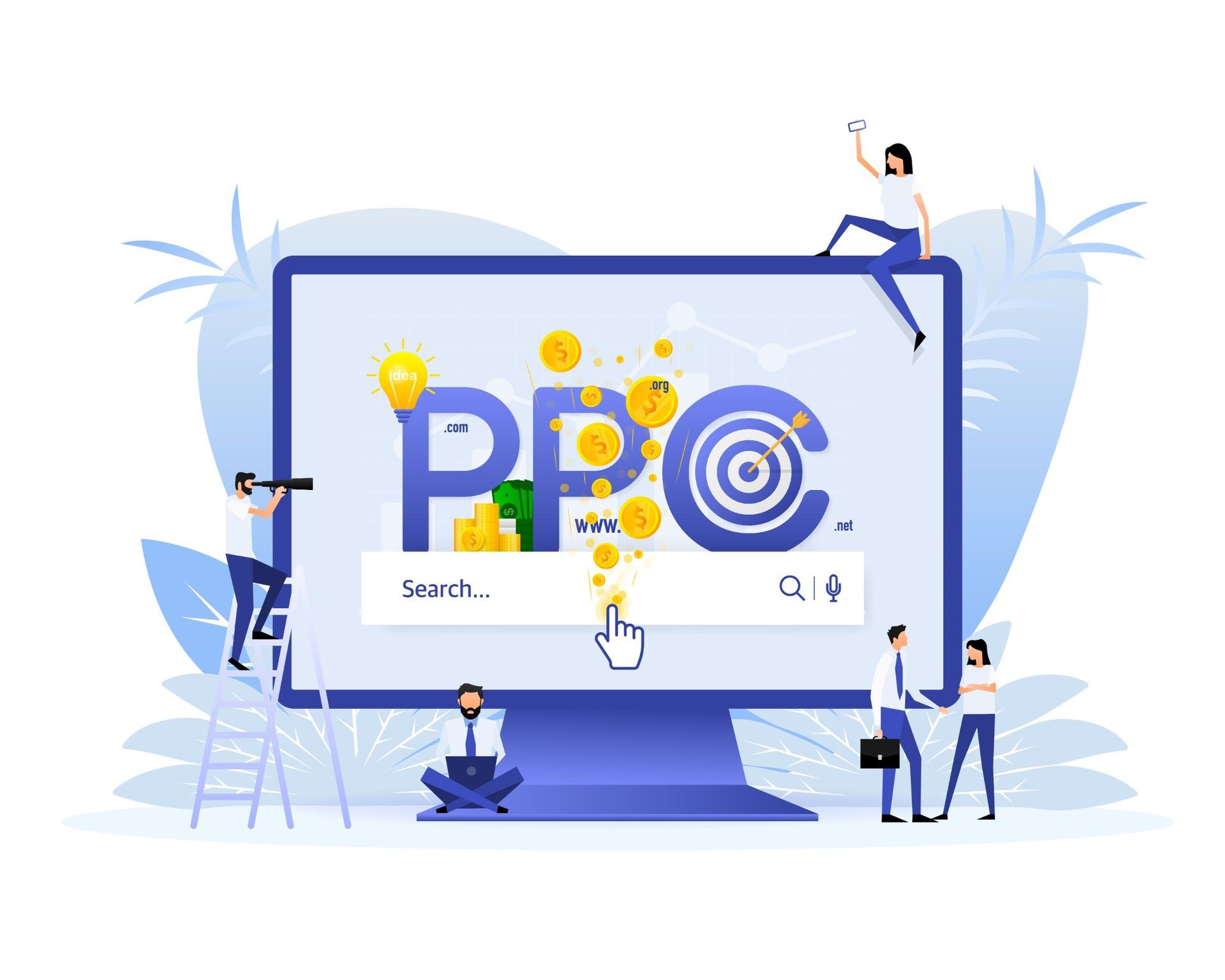The Ultimate Guide to PPC Marketing (Pay-Per-Click)
When it comes to online advertising, Pay-Per-Click (PPC) is one of the most effective methods available. If you’re looking to drive traffic to your website and boost sales, understanding PPC is essential.
Many businesses turn to a Austin AdWords agency to help them navigate the complexities of online ads. These agencies specialize in creating tailored campaigns that meet your specific needs.
They focus on targeting the right audience with the right message. In this guide, we’ll explore everything you need to know about PPC marketing.
Whether you’re a beginner or looking to refine your strategy, you’ll find valuable insights to help you succeed.
What is PPC Marketing and Why is it Crucial for Small Businesses?
Pay-Per-Click (PPC) marketing is an online advertising model where advertisers pay a fee each time one of their ads is clicked. Essentially, it’s a way of buying visits to your site rather than attempting to earn those visits organically.
For small businesses, understanding PPC is vital as it provides an opportunity to gain visibility quickly and effectively in a competitive market.
The Importance of PPC for Small Businesses
- Immediate Results: Unlike traditional SEO strategies, which can take time to yield results, PPC allows your business to appear at the top of search engine results pages almost instantly.
- Targeted Audience: With PPC, you can tailor your audience segments, ensuring your ads reach users who are already searching for your products or services.
- Budget Control: You have the flexibility to set budgets that align with your business goals, making it a scalable option.
Integrating these facets can significantly enhance your overall digital marketing strategy. Many small businesses turn to a Austin PPC management company for expertise in making the most of their PPC campaigns.
By working with professionals, you can create highly-targeted ads that resonate with users, optimize your spending, and achieve a strong return on investment.
Understanding the Basics of Pay-Per-Click
Pay-Per-Click (PPC) advertising is a fundamental approach in digital marketing, providing a pathway to increase website traffic through paid search placements. But what makes PPC stand out? Let’s explore the core elements that define this marketing strategy:
1. Keyword Selection
Choosing the right keywords is crucial for PPC success. These keywords should reflect the search terms that potential customers are using. Here are some strategies for effective keyword selection:
- Focus on long-tail keywords to capture specific searches.
- Use tools like Google Keyword Planner to identify trending keywords related to your business.
- Regularly review and adjust your keyword list based on performance metrics.
2. Ad Creation
Creating compelling ads is key to attracting clicks. Consider the following tips:
- Write concise and engaging headlines.
- Highlight unique selling points and calls to action (CTAs).
- Use ad extensions to provide additional information, such as location or additional links.
3. Landing Page Optimization
A well-designed landing page ensures that visitors have a seamless experience, turning clicks into conversions. Steps to enhance your landing page include:
- Ensure fast loading times.
- Incorporate clear, compelling content that aligns with the ad’s promise.
- Use strong CTAs that guide users toward the desired action.
4. Performance Monitoring
It’s essential to track the performance of your PPC campaigns continually. Key performance indicators (KPIs) to focus on include:
- Click-Through Rate (CTR)
- Conversion Rate
- Return on Ad Spend (ROAS)
Setting Up Your First PPC Campaign
Launching your first Pay-Per-Click (PPC) campaign can be an exciting step towards growing your online presence. Here’s a structured approach to help you set your campaign up for success:
1. Define Your Goals
Before jumping into the campaign setup, it’s crucial to determine what you aim to achieve. Common goals include:
- Increasing Website Traffic: Drive more visitors to your site.
- Boosting Sales: Convert clicks into purchases of your products or services.
- Generating Leads: Gather contact information from potential customers for future marketing.
2. Choose Your Platform
Deciding where to run your ads is essential. Popular platforms include:
- Google Ads: Reach users at the moment they search for what you’re offering.
- Facebook Ads: Leverage demographic and interest targeting to connect with potential customers.
- Bing Ads: An alternative that can sometimes offer lower competition and costs.
3. Budgeting for Success
Establish a budget that reflects your goals and resources. Consider both daily and monthly spending limits. Here’s how to approach budgeting:
- Start Small: If you’re new to PPC, begin with a modest budget to test what works.
- Adjust as Needed: Monitor your campaign’s performance and allocate funds to the best-performing ads.
4. Create Ad Groups
Organize your ads into related groups. This helps streamline your campaigns. Here’s how:
- Group by Product/Service: Each ad group can focus on specific offerings.
- Target Keywords: Make sure your keywords relate closely to the ads in the group for maximum relevance.
5. Monitor and Optimize
Once your campaign is live, continually monitor its performance. Key factors to watch include:
- Impressions: How often your ad is shown.
- Clicks: The number of users clicking on your ad.
- Conversions: Are users taking the desired actions on your landing page?
Measuring Success
To determine the effectiveness of your Pay-Per-Click (PPC) campaigns, it’s crucial to have a robust system in place for measuring success. Effective measurement allows you to refine your strategies and maximize your return on investment (ROI).
Here’s how to methodically assess the performance of your campaigns:
Key Performance Indicators (KPIs)
Identifying and tracking specific KPIs is fundamental in understanding how well your campaigns are performing. Some essential KPIs to monitor include:
- Click-Through Rate (CTR): Indicates the percentage of people who clicked on your ad versus how many saw it. A high CTR suggests your ads are relevant and appealing.
- Conversion Rate: Measures the percentage of visitors who take the desired action, whether it’s making a purchase or signing up for a newsletter.
- Cost Per Click (CPC): Understand how much you’re paying for each click. This metric helps in evaluating the economic efficiency of your ads.
- Return on Ad Spend (ROAS): Assesses the revenue generated for each dollar spent on your PPC campaigns.
Setting Up Google Analytics
Integrating Google Analytics with your PPC campaigns can provide deeper insights into visitor behavior and campaign performance. Here are some steps to set it up:
- Create Goals: Define what you want to achieve — be it sales, lead generation, or website visits.
- Track Campaigns: Use UTM parameters for better tracking of individual campaigns.
- Monitor Audiences: Understand the demographics and interests of your visitors to tailor future campaigns.
Regular Review and Optimization
It’s crucial to continuously analyze the performance data and make necessary adjustments. Here’s how to keep your campaigns optimized:
- A/B Testing: Experiment with different ad copies, images, and landing pages to see what resonates best with your audience.
- Refine Keyword Strategy: Regularly review your keyword performance. Focus on high-performing keywords while phasing out underperformers.
- Adjust Budget Allocation: Consider reallocating your budget towards campaigns or ads that deliver better results.
Ready to take your PPC efforts to the next level?
PPC marketing is a powerful tool for small business owners looking to boost their online presence and achieve their business goals. By understanding the basics, setting up a well-structured campaign, and continuously optimizing your efforts, you can see significant returns on your investment.
Remember to track your progress, avoid common pitfalls, and stay updated on the latest trends. With the right approach, PPC marketing can help your business thrive in today’s competitive digital landscape.







